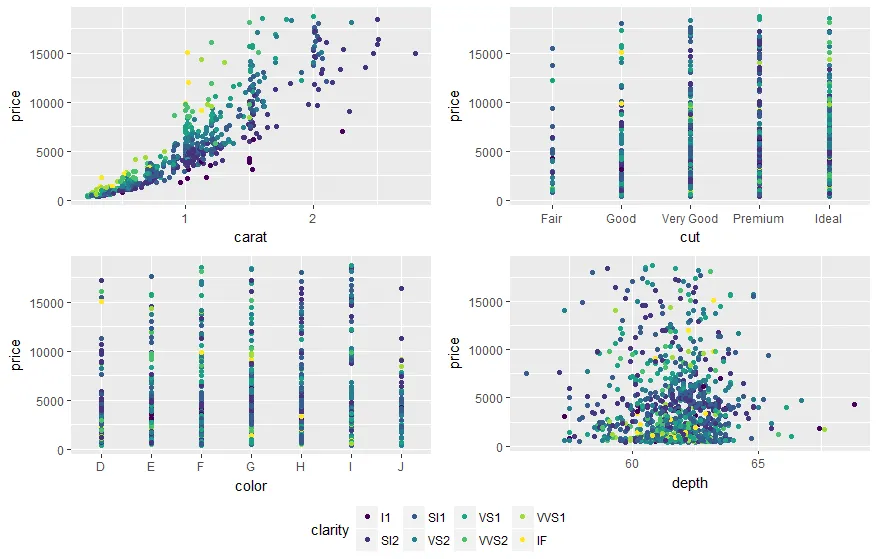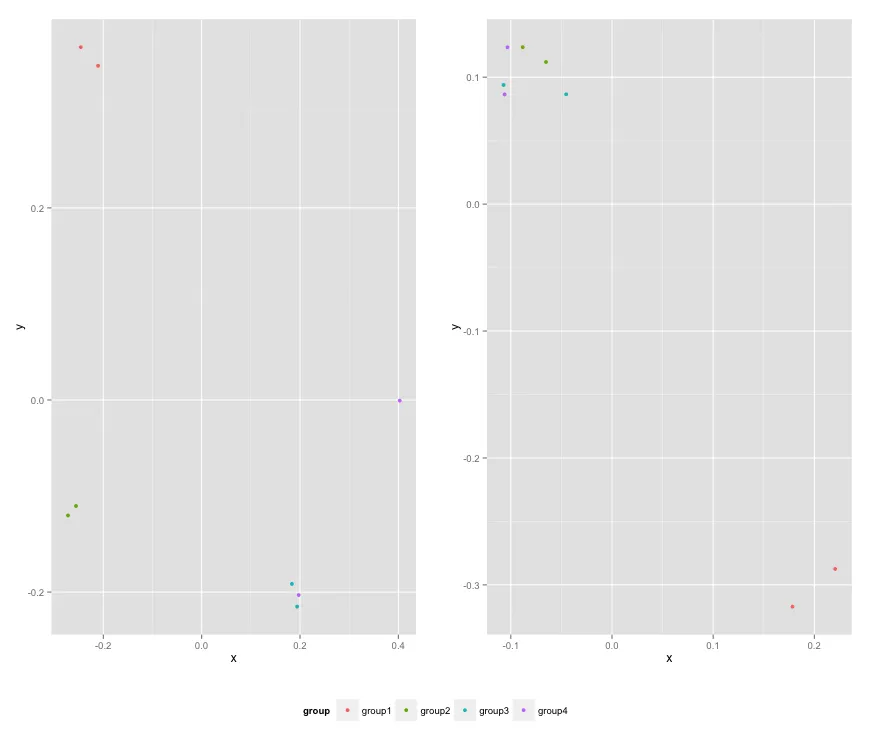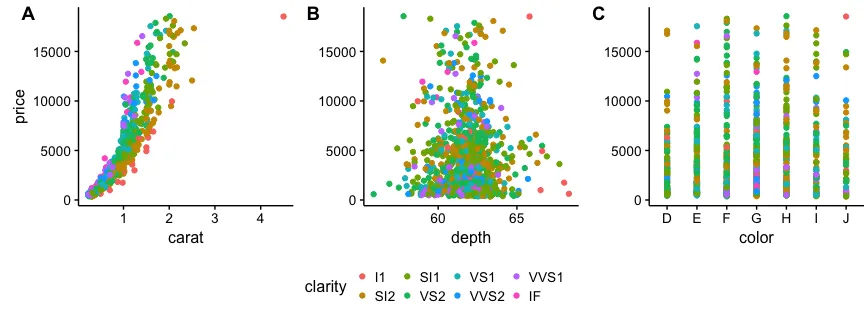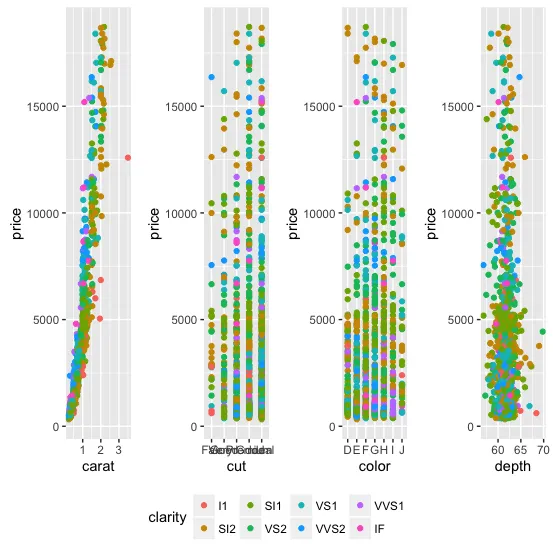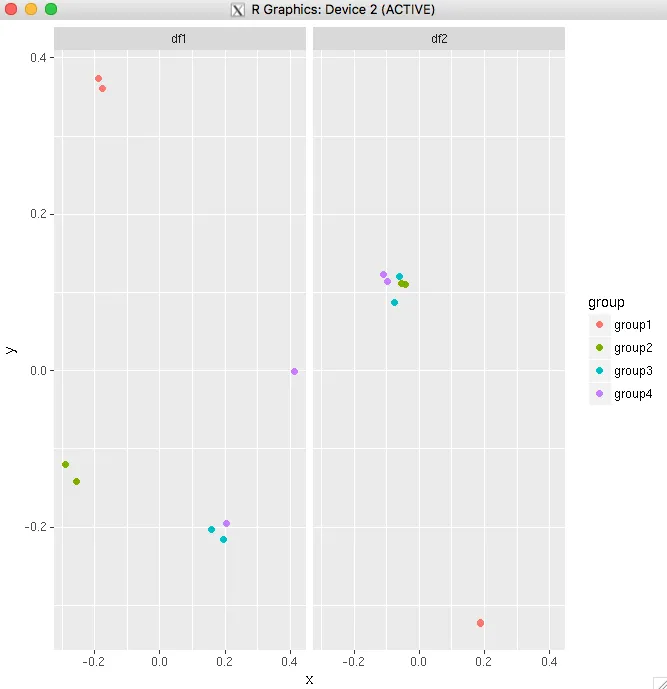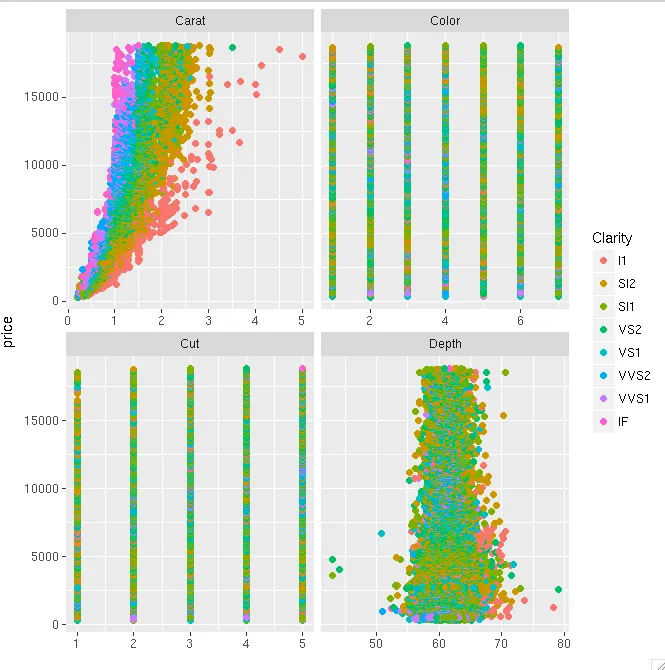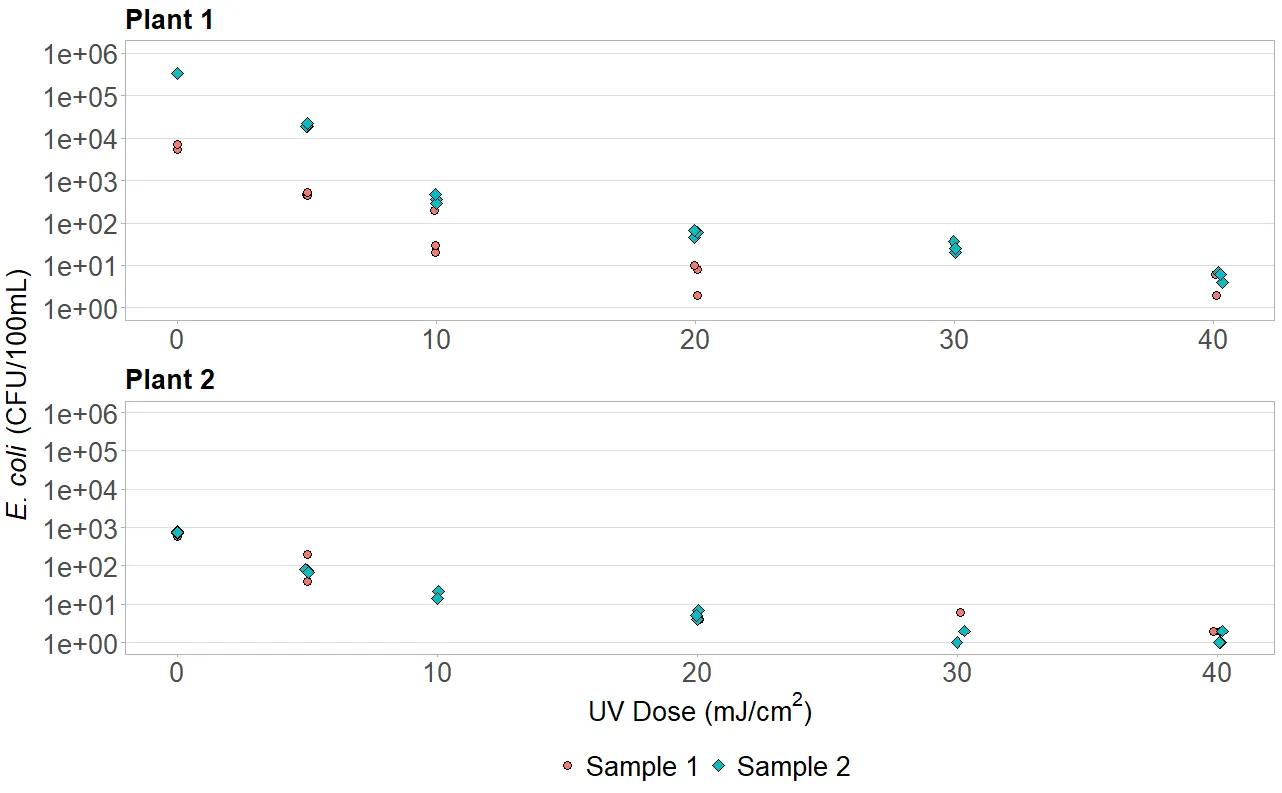我有两个ggplots,我用grid.arrange将它们水平对齐。我查看了许多论坛帖子,但是我尝试的所有命令似乎都已经更新并命名为其他名称。
我的数据长这样:
# Data plot 1
axis1 axis2
group1 -0.212201 0.358867
group2 -0.279756 -0.126194
group3 0.186860 -0.203273
group4 0.417117 -0.002592
group1 -0.212201 0.358867
group2 -0.279756 -0.126194
group3 0.186860 -0.203273
group4 0.186860 -0.203273
# Data plot 2
axis1 axis2
group1 0.211826 -0.306214
group2 -0.072626 0.104988
group3 -0.072626 0.104988
group4 -0.072626 0.104988
group1 0.211826 -0.306214
group2 -0.072626 0.104988
group3 -0.072626 0.104988
group4 -0.072626 0.104988
#And I run this:
library(ggplot2)
library(gridExtra)
groups=c('group1','group2','group3','group4','group1','group2','group3','group4')
x1=data1[,1]
y1=data1[,2]
x2=data2[,1]
y2=data2[,2]
p1=ggplot(data1, aes(x=x1, y=y1,colour=groups)) + geom_point(position=position_jitter(w=0.04,h=0.02),size=1.8)
p2=ggplot(data2, aes(x=x2, y=y2,colour=groups)) + geom_point(position=position_jitter(w=0.04,h=0.02),size=1.8)
#Combine plots
p3=grid.arrange(
p1 + theme(legend.position="none"), p2+ theme(legend.position="none"), nrow=1, widths = unit(c(10.,10), "cm"), heights = unit(rep(8, 1), "cm")))
我应该如何从这些图表中提取图例并将其添加到组合图的底部/中心?
